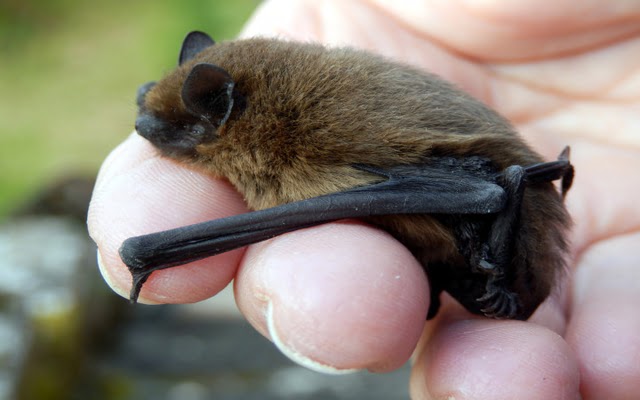
When Halloween comes around, what do you think of? Witches flying on broomsticks? Carved pumpkins with lights inside? Ghosts floating in the air?
All of these things are associated with the spooky season. But there’s one more creature that appears in decorations during autumn: the bat.
Bats tend to have a negative reputation that they don’t deserve. Is it because of their association with Halloween? Maybe. Or perhaps people are scared of flying animals with sharp teeth that sleep upside-down in caves.
Whatever the reason, many people have an irrational fear of bats. However, those who enjoy exploring caves often develop an appreciation for these animals. When you see them in their natural habitat, you realize that there’s really nothing to be afraid of.
In recent years, though, bats have faced numerous threats from their environment. Many bats have become victims of a disease called white-nose syndrome (WNS).
WNS is caused by a fungus known scientifically as Pseudogymnoascus destructans. It is believed that this foreign fungus was brought into America from Europe.
The fungal disease was first discovered in New York in 2006. Within ten years, it had spread to over half of the United States and at least five Canadian provinces.
The fungus infects bats while they are hibernating. The name “white-nose syndrome” refers to the white fungal growth that appears on the faces and wings of infected bats.
The disease causes bats to use more energy and even wake up prematurely from hibernation. As a result, they deplete their stored fat and starve to death before spring arrives.
So far, WNS has caused the death of millions of bats and led to significant population declines. Some species may even be on the brink of extinction in certain areas.
As far as scientists know, WNS does not affect humans. However, humans can unknowingly spread the fungus that causes WNS. This is why many caves in the U.S. have been temporarily closed in order to prevent the spread of WNS among specific bat species affected by the disease.
Try It Out
Are you interested in learning more about bats and the efforts of scientists to protect them? Make sure to explore the following activities with a friend or family member:
- Do you like bats? Do you enjoy exploring caves? If you’re a fan of either bats or caving, you have probably heard of white-nose syndrome. But is there anything you can do to help? Take a look at How You Can Help online.
- Why do some people dislike bats? There are various reasons, but experts believe that Bats Are Misunderstood. Read more online to discover the important role bats play in their local ecosystems.
- Have conservation efforts to protect bats been successful? It’s possible! Read the article Bats May Be Poised for a Comeback from White-Nose Syndrome online. Write down three facts that you learn from the article and share them with a friend or family member.
Wonder Sources
- https://www.nps.gov/articles/what-is-white-nose-syndrome.htm (accessed 11 Jan. 2019)
- https://www.whitenosesyndrome.org/static-page/what-is-white-nose-syndrome (accessed 11 Jan. 2019)
FAQ
1. What is white-nose syndrome?
White-nose syndrome (WNS) is a deadly fungal disease that affects hibernating bats. It is caused by a fungus called Pseudogymnoascus destructans, which grows on the wings and noses of bats while they are in hibernation. The fungus irritates the bats, causing them to wake up more frequently during hibernation, leading to a depletion of their energy reserves. This often results in starvation and death.
2. How does white-nose syndrome spread?
The white-nose syndrome fungus spreads primarily through bat-to-bat contact. Bats are social animals and often gather in large colonies, making it easy for the fungus to spread from one bat to another. The fungus can also be transmitted indirectly through contaminated surfaces, such as cave walls or equipment used by researchers or cavers. Additionally, humans can unintentionally spread the fungus by visiting infected caves and then visiting unaffected areas without properly decontaminating their clothing or equipment.
3. Which bat species are affected by white-nose syndrome?
White-nose syndrome primarily affects hibernating bats in North America. It has been found to affect several bat species, including the little brown bat, northern long-eared bat, tricolored bat, and Indiana bat. These species are especially vulnerable to the disease because they hibernate in large numbers and have a close proximity to each other, allowing for easy transmission of the fungus.
4. What are the consequences of white-nose syndrome?
White-nose syndrome has had devastating effects on bat populations in North America. Millions of bats have died since the disease was first discovered in 2006. The loss of bats has significant ecological consequences, as they play a crucial role in insect control and pollination. Without bats, insect populations can increase dramatically, leading to potential crop damage and the spread of disease. Additionally, the decline of bat populations has a negative impact on cave ecosystems, as bats are important contributors to nutrient cycling and seed dispersal.





Leave a Reply